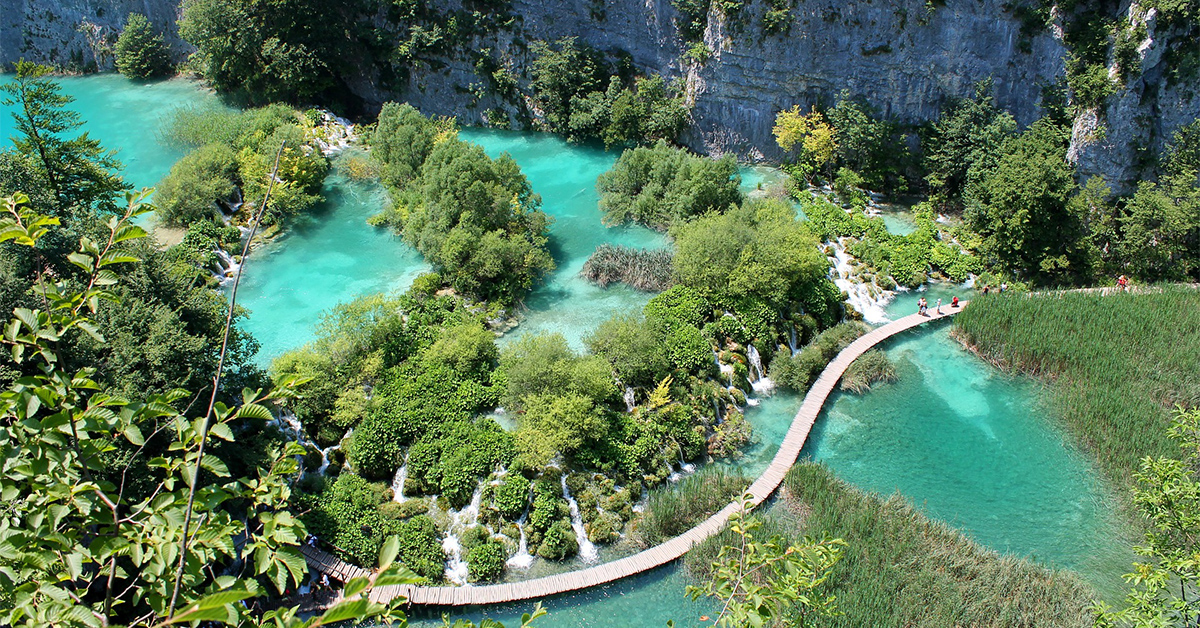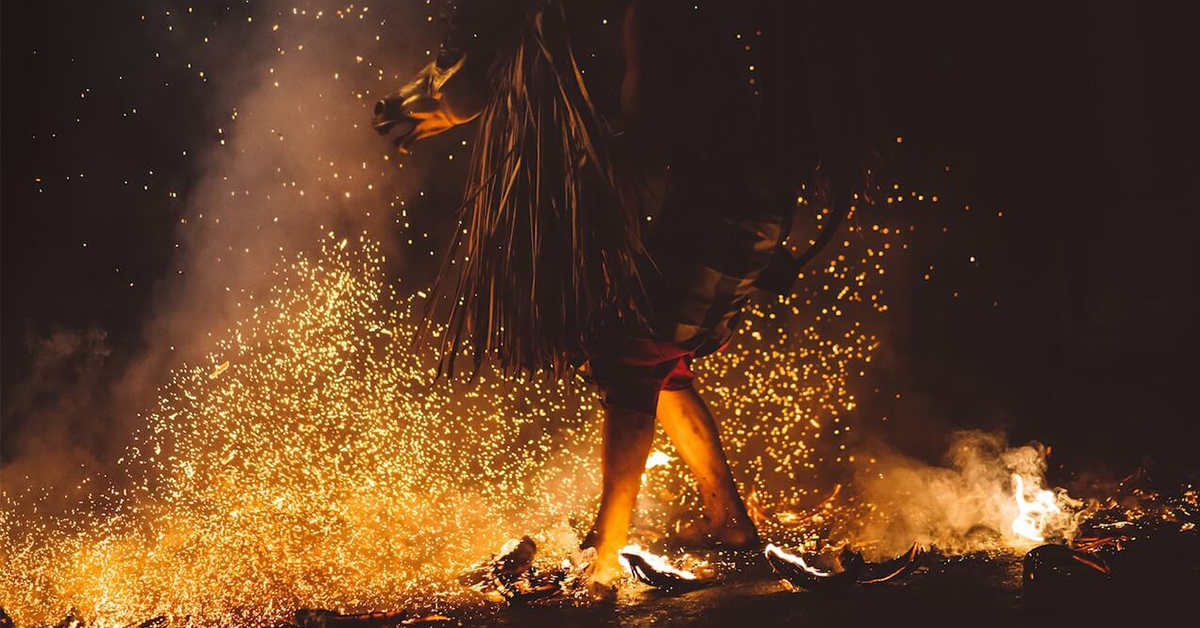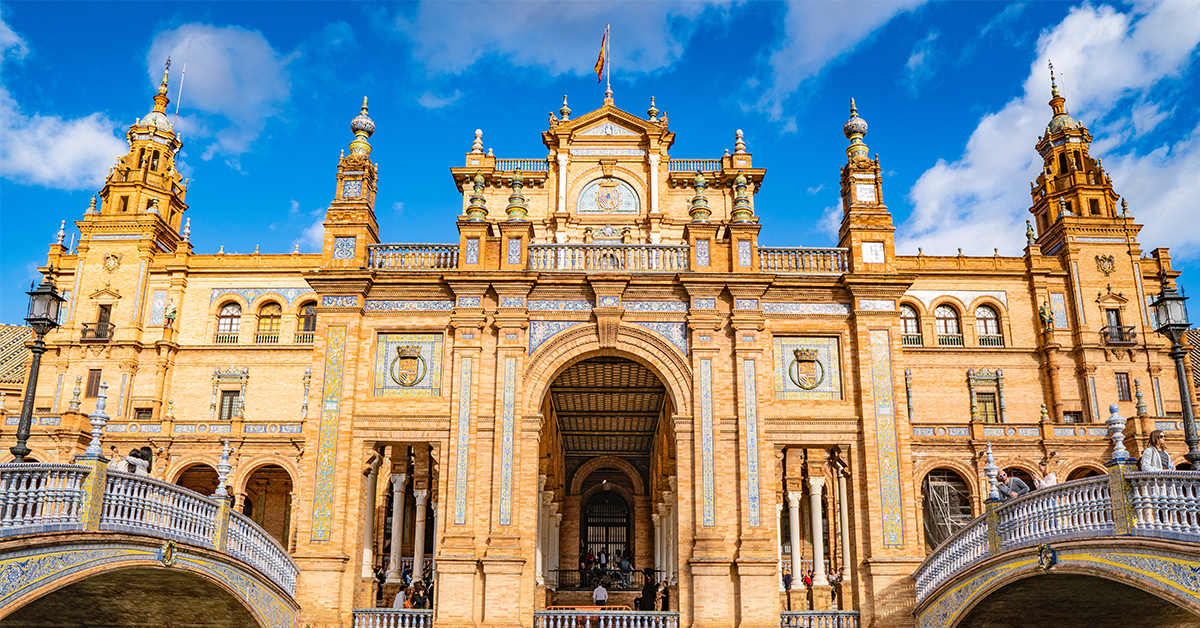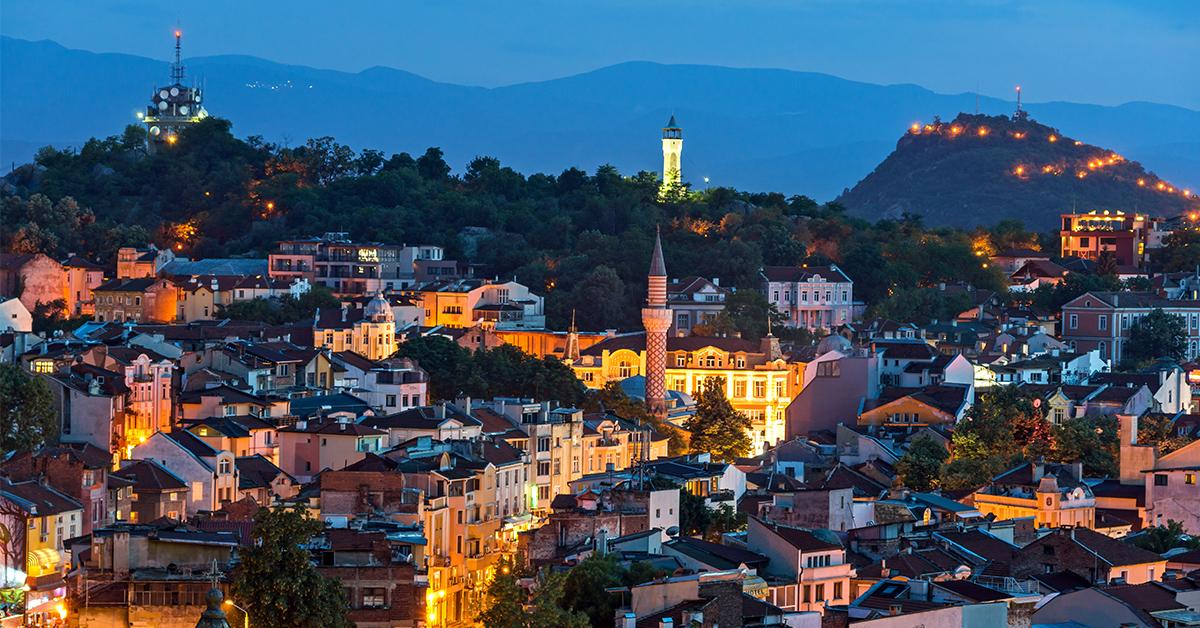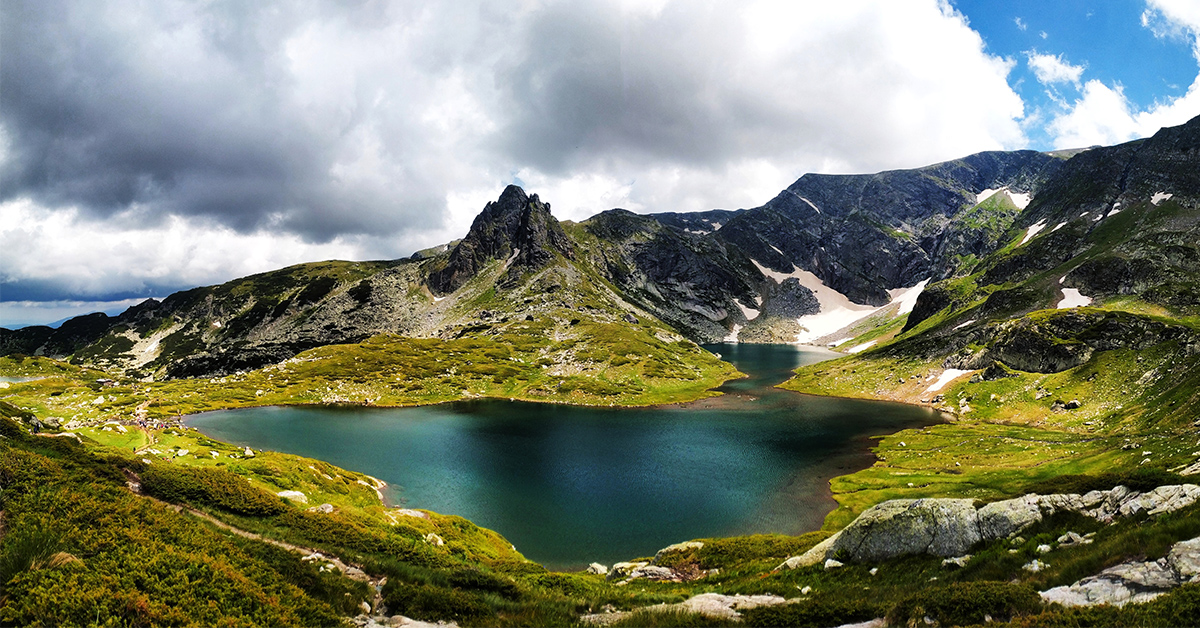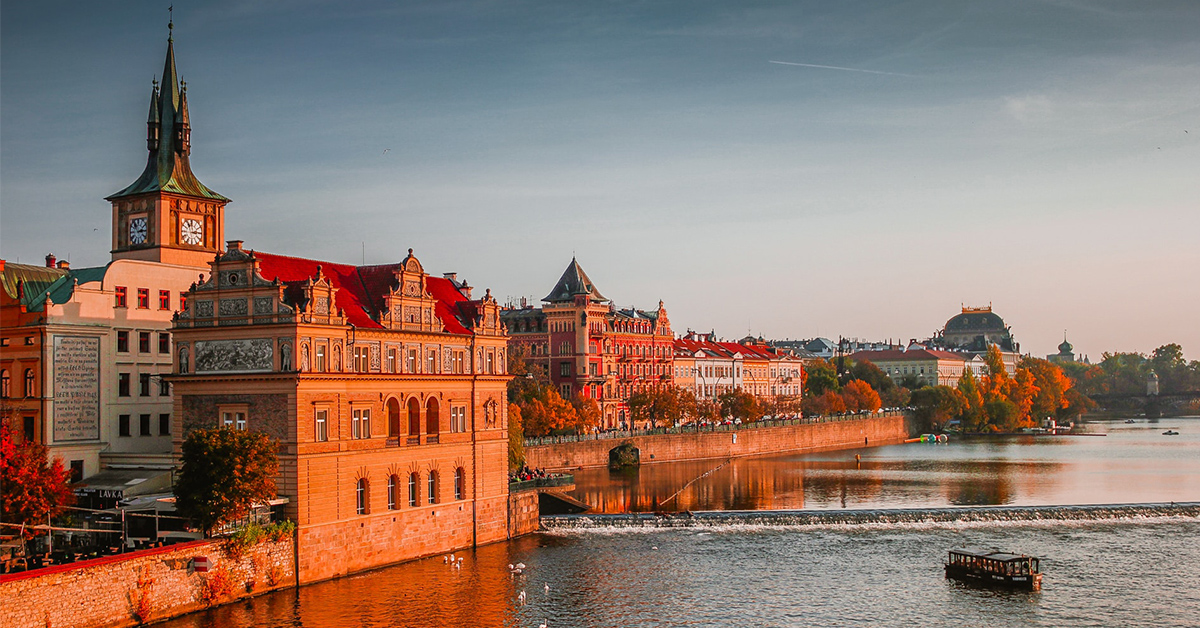15 Waterfalls & Caves In Europe To Put On Your Bucket List
Europe’s nature is a truly fascinating force that’s been drawing in visitors from pretty much every corner of the earth for centuries. The Old Continent boasts natural wonders which happen to include some of the world’s most beautiful caves and waterfalls. Countries such as Croatia, Austria, Slovenia and Bulgaria have proven time and again that their beauty is unmatched and worth the trip of a lifetime. Should you find yourself in search of a new adventure, here are 15 waterfalls & caves In Europe to put on your bucket list!
1/ Postojnska Jama (Slovenia)
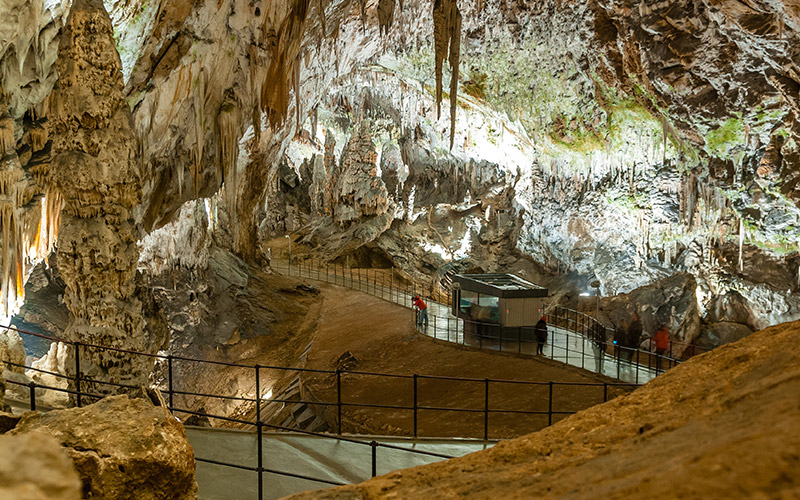
Postojnska Jama (Slovenia), picture source: wikipedia.org
Caves are among the most impressive natural sights that Europe has to offer. Postojnska Jama in Slovenia is one of the best-known caves in the world, and for a good reason. The impressive cave features over 24 kilometres of underground passages, galleries and halls. It has been visited by more than 39 million people and is one of Slovenia’s best-known attractions. Upon entering the cave you will be amazed by all the rock formations such as stalactites and stalagmites. The mysterious underground halls connect various points of the cave where you can marvel at some stunning views.
Postojnska Jama is home to the endemic olm, the largest troglodytic amphibian in the world. The tour through the caves includes an aquarium where you can see these unique cave-dwelling species. You can also go on a fun ride on the underground train and enjoy a 3.7-km-long journey on the world’s only double-track cave railway. It’s certainly an experience you’re not likely to ever forget.
2/ Seljalandsfoss Waterfall (Iceland)
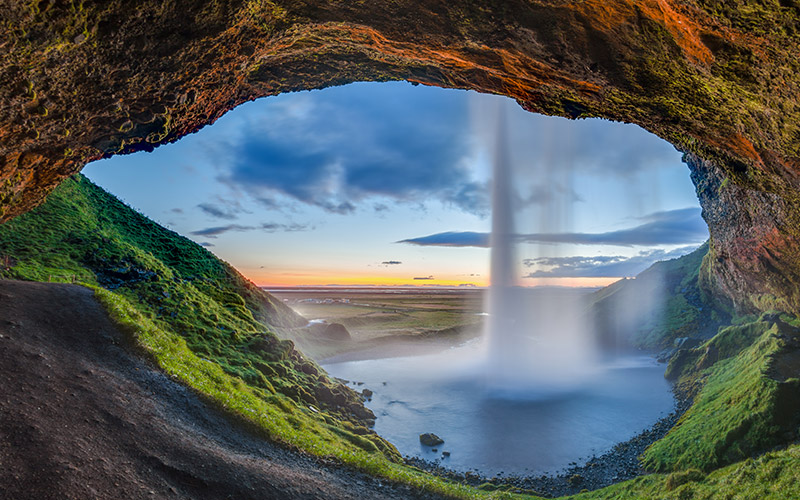
Seljalandsfoss (Iceland), picture source: wikipedia.org
This truly majestic and picturesque waterfall is one of the most photographed places in all of Iceland. The site is conveniently located near Ring Road 1 and can be easily accessed through road 249 leading to the mountains of Þórsmörk. The waterfall has an impressive 60-metre drop from a series of cliffs and you can actually walk behind it and capture some truly unique photos from a different perspective. The entire region around the site is full of natural beauty and sights so make sure to have your explorer gear on and keep your camera close by. The waterfall is part of the Seljalands River whose origins go back to the volcano glacier Eyjafjallajökull.
3/ Eisriesenwelt Cave (Austria)
Eisriesenwelt is a beautiful Alpine cave made of natural limestone. The site is located in Werfen, Austria, about 40 km south of Salzburg and is no doubt a magnificent, yet slightly frightening sight. The rocky interior of the cave is entirely covered in snow and extends for more than 42 kilometres in length. This is in fact, the largest ice cave in the world and it’s visited by more than 200 000 tourists each year. Today, you can visit this stunning frosty cave by foot and experience a fun aerial cable car ride that ascends almost vertically from 1084 meters to 1586 meters within minutes, giving you some spectacular panoramic views of the interior.
4/ Plitvice Waterfalls (Croatia)
The Plitvice Waterfalls are one of Croatia’s most popular tourist attractions, located between the capital city Zagreb and Zadar on the coast. They are situated within the boundaries of Plitvice Lakes National Park – a protected UNESCO World Heritage since 1979 which also happens to be the oldest and largest National park in the country. The park features over 16 lakes, inter-connected by a series of waterfalls. They’re surrounded by a large woodland area known for its rich flora and fauna and as the home of many wild animals.
The lower lakes are considered to be the highlight of the park and visitors simply can’t get enough of their natural beauty. The numerous turquoise-coloured lakes separated by tufa, or travertine and barriers are a truly spectacular sight! The highest waterfall within the park is Veliki Slap (70 metres), located at the end of the Lower Lakes.
5/ Cuevas del Drach (Spain)
Cuevas del Drach is a system of four caves located on the beautiful island of Majorca in Spain. The caves were discovered during the Middle ages, however, it was only after the 1880’s that the caves were properly explored. It was Édouard-Alfred Martel (a world pioneer of cave exploration) who actually discovered Lake Martel inside of the caves – now one of the largest subterranean lakes in the world.
The caves are open to the public and come with many paths and stairs leading you through 4 kilometres of incredible stalactite and stalagmite formations. The creatively designed lighting in the caves make the experience even more unique; you can also ride a boat and attend a classical music concert.
6/ Rhine Falls (Switzerland)
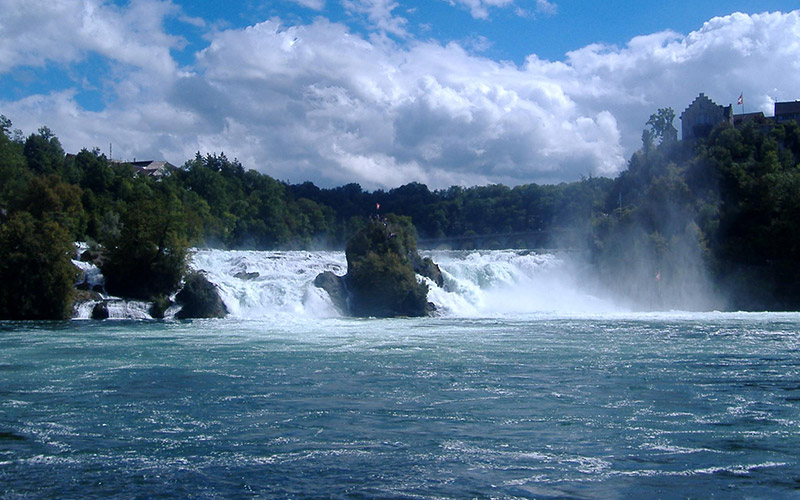
Rhine Falls (Switzerland), picture source: wikipedia.org
The Rhine Falls are not only among the largest waterfalls in Europe but they’re also the most powerful and water prolific. This impressive natural phenomenon is a spectacular sight and a great demonstration of the powerful force of nature. The nearest town to the site is Neuhausen am Rheinfall, where tourists can also visit the Wörth Castle. Boat trips are also available to visitors – they will take you right by the falls and on-site you’ll find several viewing platforms where you can enjoy truly stunning views. The falls are over 23 metres in height and 150 metres wide and are only a few kilometres from Lake Constance.
One of the easiest ways to reach the Rhine Falls is to take a train to either one of the stations on both sides of the river (right next to the waterfalls). The trip takes 45-60 minutes from the town of Zurich.
7/ Blue Grotto (Italy)
The Blue Grotto is a stunning sea cave located on the coast of the island of Capri in southern Italy. The surrealistically glowing blue waters of the Blue Grotto are a result of sunlight entering the water from outside. You can take a boat ride inside of the cave which extends for over 50 metres into the cliff at the surface and is about 150 metres deep. The best time to visit is during the summer when the water levels are low since you have to duck in order to enter the cave through the narrow entrance.
8/ Pliva Waterfall (Bosnia and Herzegovina)
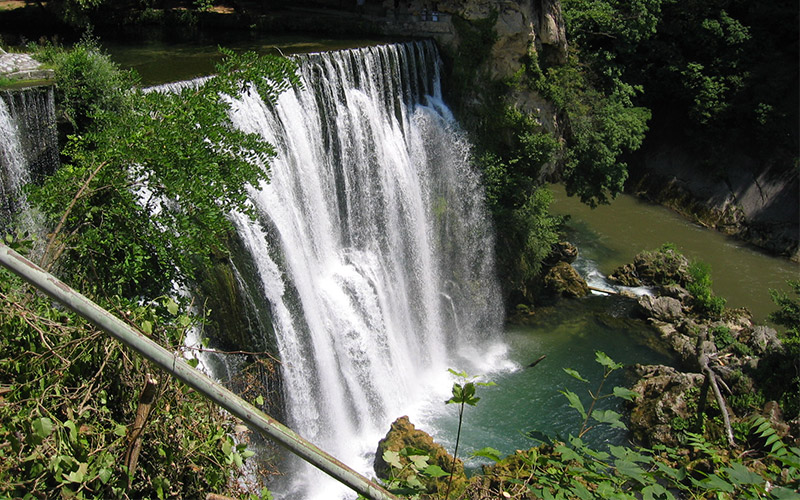
Pliva Waterfall (Bosnia and Herzegovina), picture source: wikipedia.org
The Pliva Waterfall is often referred to as one of the most beautiful waterfalls in the world and it’s all for a good reason! The stunning 22-metre waterfall certainly impresses with its unique natural beauty and the site has been enlisted on the tentative list for UNESCO’s World Heritage Sites. If you look over the waterfall you’ll be able to see the historic town of Jajce. The place boasts old buildings, fortifications and a stunning 14th-century fortress at the top. Next to the waterfall there are viewing platforms where you can enjoy the amazing views.
The waterfall’s cascading waters are part of the Pliva River and flow down into the Vrbas River. If you go down to the river from the main waterfall, you’ll come across smaller waterfalls alongside watermill huts, many of which date back to the late 19th century, during the time of the Austro-Hungarian Empire.
9/ Hölloch Caves (Switzerland)
The Hölloch Caves in Switzerland are part of the longest cave system in Western Europe (also fourth in the world). The caves were first discovered back in 1875 and are a great example of a karst cave system. They feature multiple underground twists and turns, along with an impressive 190 kilometres length.
Venturing down its labyrinthine tunnels is not recommended without a guide as it’s very easy to get lost. There are 3 types of tours available at the caves. The short tours are suitable for beginners and include only the area near the entrance. The other two are restricted for qualified climbers (requiring a lot of physical endurance) only and consist of longer expeditions down the intricate tunnels of the caves.
10/ Cascate del Mulino (Italy)
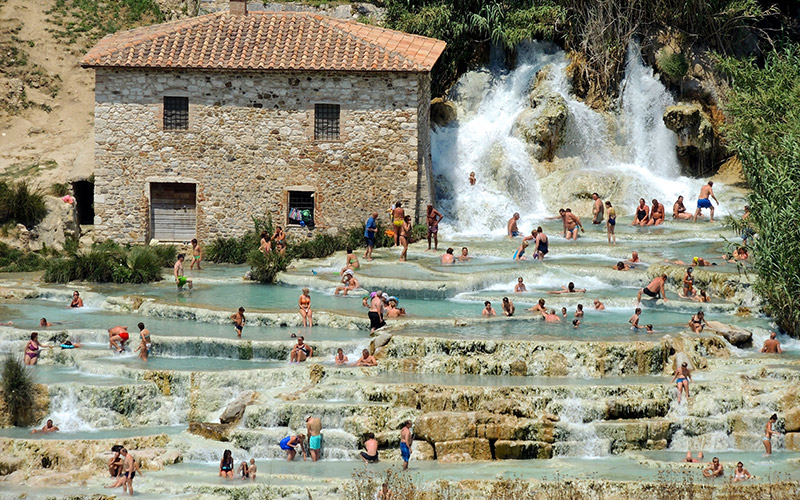
Cascate del Mulino (Italy), picture source: wikipedia.org
The Cascate del Mulino waterfalls are located near the towns of Manciano and Saturnia in Italy’s famous Tuscany region. The geothermal springs have been adapted by а number of semi-natural shallow basins where visitors can bathe. The sulfur-rich waters that flow from its limestone terraces are said to have healing qualities that draw many tourists every year. You can literally enjoy a thermal spa day, completely free! The site is open to the public and there are showers as well as coffee and snack bars available where you can enjoy food and beverages.
The views of the surrounding country region from the pools are simply stunning and there is also a camping area near the cascades with plenty of space where visitors can camp for days and weeks, especially in the summer when the site tends to get very crowded. This hidden gem is a fantastic place to spend a day relaxing with friends and family, all while bathing in the warm and comfortable waters, with a temperature of over 30°C.
11/ Devil’s Throat Cave (Bulgaria)
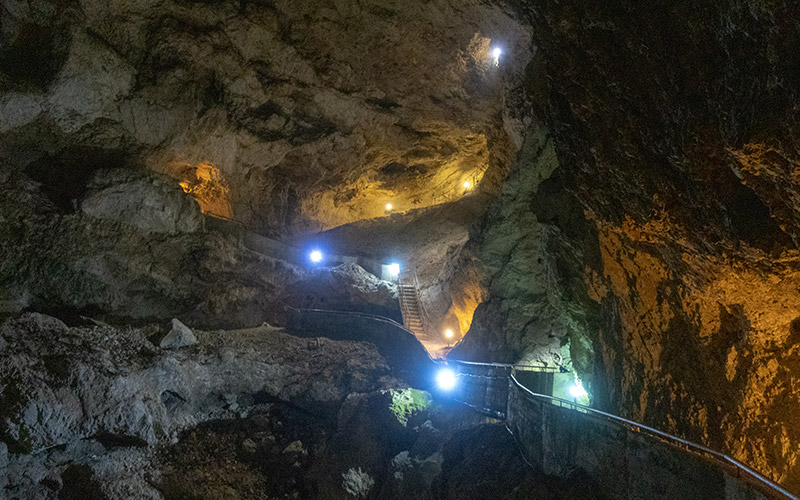
Devil’s Throat Cave (Bulgaria), picture source: wikipedia.org
The Devil’s Throat Cave is one of the best-known caves in Bulgaria. It’s located at about 2 kilometres from the town of Trigrad and the beautiful Trigrad Gorge (a canyon of vertical marble rocks in the Rhodope Mountains).
Unlike other caves in the country, the Devil’s Throat doesn’t actually have any specific rock formations or natural corridors and halls. It’s what’s referred to as a precipice cave, meaning that the water from the Trigrad river falls down into a deep ravine. This has created the tallest underground waterfall on the Balkans with the impressive 42 metres in height. You can only enter the cave with a tour guide that will walk you through the man-made stairways and halls through to the waterfall. The most impressive feature of the cave is certainly the ‘’Roaring Hall’’. The chamber is 110 metres long, 35 metres high and 40 metres wide and has been carved by the continuously falling waters – it offers some eerie, yet spectacular views.
12/ Jägala Waterfall (Estonia)
The Jägala Waterfall is the widest natural waterfall in Estonia and you can bet the place is as picture-friendly as it gets. The waterfall is approximately 8 metres high and more than 50 metres wide. It’s a well-known spot to the lovers of canoeing and it tends to be quite popular during the warmer months. Since the waters are pretty shallow you can actually walk on top of it. Unfortunately, you won’t be able to swim or stand underneath the waterfall but nevertheless, the place is definitely worth a visit.
The Jägala River is also one of the most valuable rivers in Estonia where large trout and salmon can be found. The best time to visit the waterfall is in spring when the river is full of water. If you do happen to stop by during winter, you might just get to see it frozen – it’s a truly spectacular sight!
13/ Gouffre Berger (France)
The Gouffre Berger in France is known as one of the deepest and most dangerous caves in the world. It was first discovered in 1953 in Vercors, in the south-east region of France and is now a major tourist attraction. Due to its exceptional depth, the cave is certainly an experience not for the faint-hearted. With a depth of over 1122 metres, the site is the perfect place for the well-trained explorers of caves who are looking for a real adrenaline rush.
The cave is open throughout the whole year, however, you need to be an experienced climber in order to get access to it. To reach the bottom of the cave and then get back to the surface can take between 15 and 30 hours, without long breaks. At the bottom of the cave, you’ll find large lakes and waterfalls with crystal clear water.
14/ Kjosfossen Waterfall (Norway)
The Kjosfossen Waterfall is one of the most visited tourist attractions in Norway and a true force of nature! This natural wonder can be seen best from the iconic Flåmsbana railway and has a fall of over 225 metres. On your way from Flam to Myrdal, the train will stop directly in front of the majestic waterfall so you can take your time to observe it properly while taking some breath-taking photos.
During the summer season, unique folk performances take place just by the waterfall, gathering large audiences who come to enjoy the incredible spectacle. Local actresses (students from the Norwegian ballet school) dress like a Scandinavian nymph called Huldra while singing various songs.
15/ Lamprechtsofen (Austria)
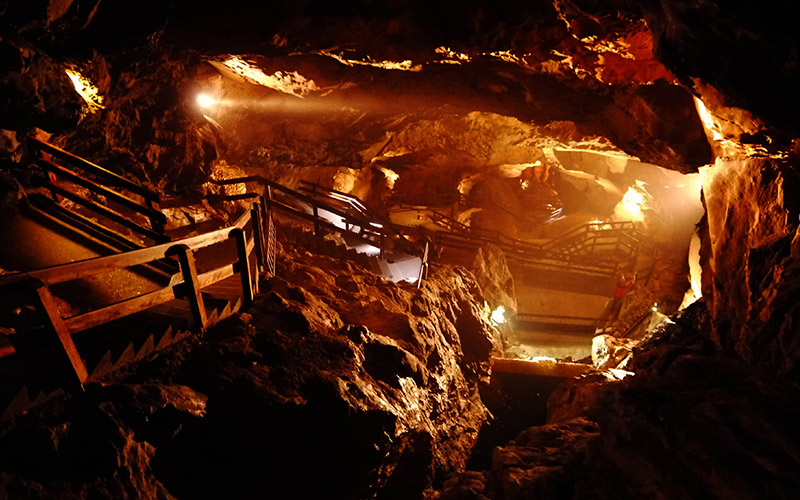
Lamprechtsofen (Austria), picture source: wikipedia.org
This stunning karst cave consists primarily of limestone rock and there is a river down at its bottom. With its impressive depth of 1632 metres, the site has been a popular tourist attraction for centuries. Before the discovery of the Krubera Caves in Georgia, the Lamprechtsofen used to be the deepest known cave in the world, however, it now stands in fourth place. The cave is located about 2 kilometres northwest of Salzburg, in the beautiful Leogang Mountains. Nowadays you can visit the cave with a guide and there over 470 stairs to climb.
Interesting fact: Due to the high number of fatalities in the 17th century, the cave was closed up in order to prevent visits by treasure seekers, who were lured to the cave by legends of wealth hidden by a knight named Lamprecht after the Crusades.
There are even more natural wonders to discover all across Europe, however, if you’re looking for an amazing vacation full of adrenaline, beauty, pristine nature and sights, these are a good place to start. And if you pass through Bulgaria on your quest for adventures, be sure to check out our recommendations on what to see and do here!

